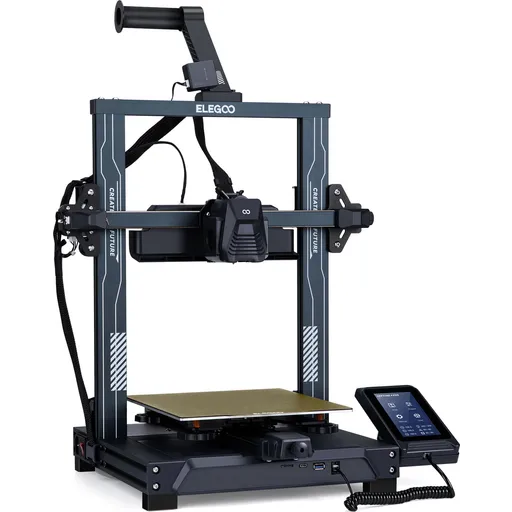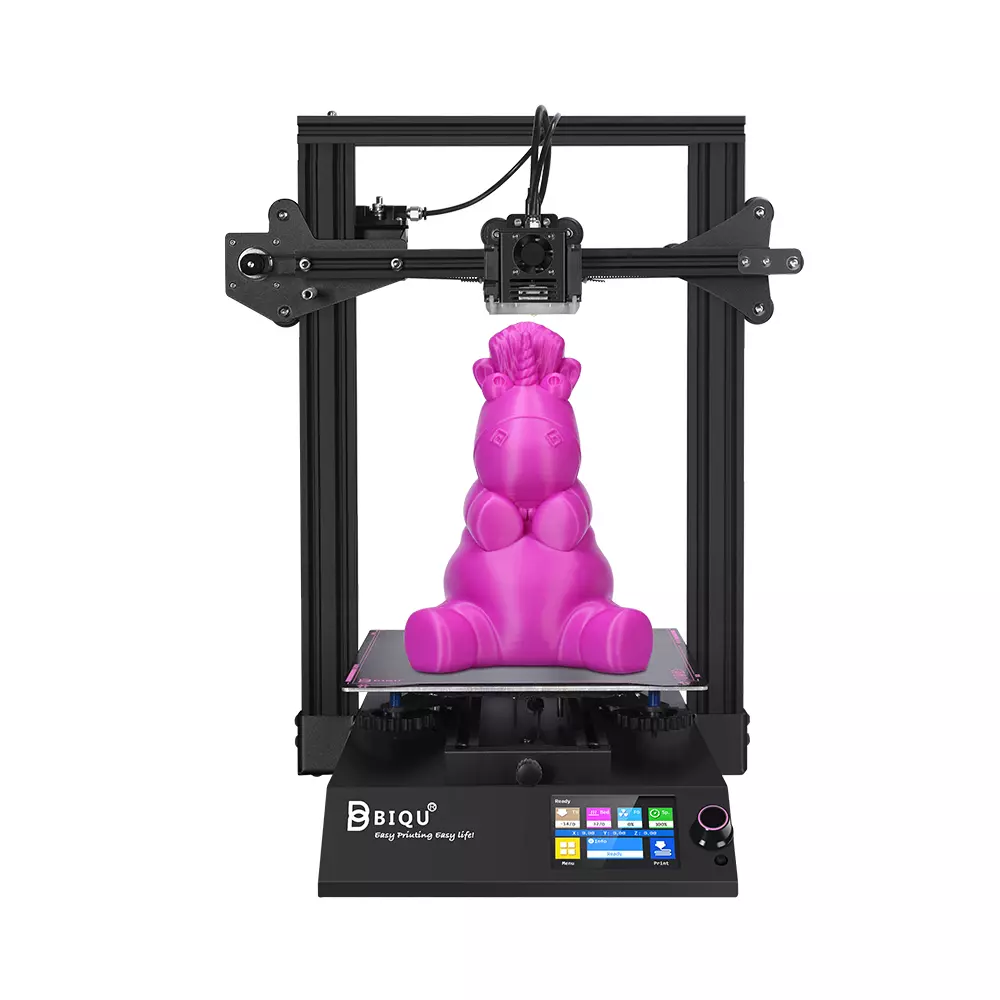Compare Neptune 4 PRO vs BIQU B1
Comparison between the best 3D printers
Choose the best 3D printer at the best price. The cheapest 3D printers are here.
Buy a 3D printer here with 3D Fila.
 |
 |
|
| Model | Neptune 4 PRO |
BIQU B1 |
| Printing Material | Filament | Filament |
| Buy Filament for Elegoo Neptune 4 PRO | Buy Filament forBigTreeTech BIQU B1 | |
| Estimated price | $359,00 | $269,00 |
| Manufacturer | Elegoo | BigTreeTech |
| Release Year | 2023 | 2020 |
| Print Volume [mm] | 225x225x265 | 235x235x270 |
| Printer Size [mm] | 475x445x515 | 412x402x492 |
| Weight [kg] | 8,9 | 8,00 |
| Power Loss Recovery | YES | YES |
| Enclosed printer | NO | NO |
| Bed Leveling | Automatic | Manual |
| Filament End Sensor | YES | YES |
| Bed type | Heated | Heated |
| Power supply system | Direct Drive | Bowden |
| Standard nozzle | 0,4 | 0,4 |
| Maximum Nozzle Temperature [°C] | 300 | 250 |
| Maximum Bed Temperature [°C] | 110 | 100 |
| Maximum printing speed [mm/s] | 500 | 100 |
| Filament holder | YES | YES |
| Camera for supervision | NO | NO |
| Recommended filaments | PLA, PLA+, TPU, PETG, Nylon, ABS | PLA, TPU, ABS, PETG |
| Recommended slicers | Bambu Studio, Super Slicer, Cura, Prusa Slicer, Orca | Cura, Simplify, Slic3r |
| Maximum Resolution [mm] | 0,1 | 0,1 |
| Processor | ARM 64 bit | 32 Bits BTT SKR V 1.4 |
| Display | Touchscreen 4,3'' | Touchscreen TFT 3,5'' |
| Power Supply | 310 W | 24V / 360W |
| Connectivity | USB, microSD | SD / USB |
| Operating systems | Windows, Linux, Macbook | Windows, Mac, Linux |
| Date of registration in the system | 2024-07-02 | 2021-04-14 |
| Release date | 2023 | 2020 |
| Extra features | The Elegoo Neptune 4 Pro stands out for its advanced features, including pre-installed Klipper firmware, a dual-gear direct extruder with a 5.2:1 ratio, a high-temperature nozzle (up to 300°C), a flexible magnetic PEI platform, efficient cooling fans, and a 121-point auto-leveling system. The printer also features a 4.3-inch touchscreen interface, dual linear bars on the X and Y axes, and a segmented heated bed for energy savings. | The BIQU B1 is an advanced 3D printer with a silent 32-bit BTT SKR V1.4 motherboard and ARM Cortex-M3 CPU, offering DIY interfaces (I2C, SPI, WiFi) and dual Z-axis. Its dual BTT B1 TFT35 V3.0 operating system allows real-time monitoring and multiple printing modes, including G-code visualization effects. It stands out for its BIQU SSS (Super Spring Steel), ensuring easy model adhesion and simplified removal, with the possibility of using it on both sides. It includes a filament sensor, automatically pausing printing in case of filament breakage. The multicolored RGB lights integrated into the hotend allow you to view the printing status even at night. Additional notes include the need for a BIQU-specific Type-C cable and extra interfaces for smart filament sensor and BL Touch. |
| Support for multiple colors and materials (AMS and CFS) | NO | NO |
Notes * |
||
| Cost-benefit | 7 / 10 | 6 / 10 |
| Hardware | 3.2 / 10 | 2 / 10 |
| Tela | . | . |
| Print volume | 3 / 10 | 3 / 10 |
| Performance | 4 / 10 | 0 / 10 |
Conclusion |
| ### Conclusion In the comparison between the Elegoo Neptune 4 Pro and the BIQU B1 3D printers, several key factors emerge that can guide potential users in their decision-making process. The Elegoo Neptune 4 Pro, priced higher but offering advanced features, excels in several areas including maximum nozzle and bed temperatures, print speeds, and automated bed leveling, which can enhance usability and printing performance. Its robust design, including a dual-gear direct extruder and segmented heated bed, caters well to a range of materials and printing needs. On the other hand, the BIQU B1, while more budget-friendly, provides a solid performance with customizable features suited for enthusiasts who enjoy DIY setups. Despite its limitations in print speed and automatic leveling, it offers a decent range of recommended materials and operates on a silent motherboard, which could appeal to home users seeking quieter operation. Ultimately, the choice between the two comes down to the user’s specific needs and budget. The Neptune 4 Pro is better suited for those seeking a more feature-rich experience, while the BIQU B1 remains a commendable option for cost-conscious users looking for reliable performance. Both printers have their unique strengths, making them viable contenders in the 3D printing arena. |

